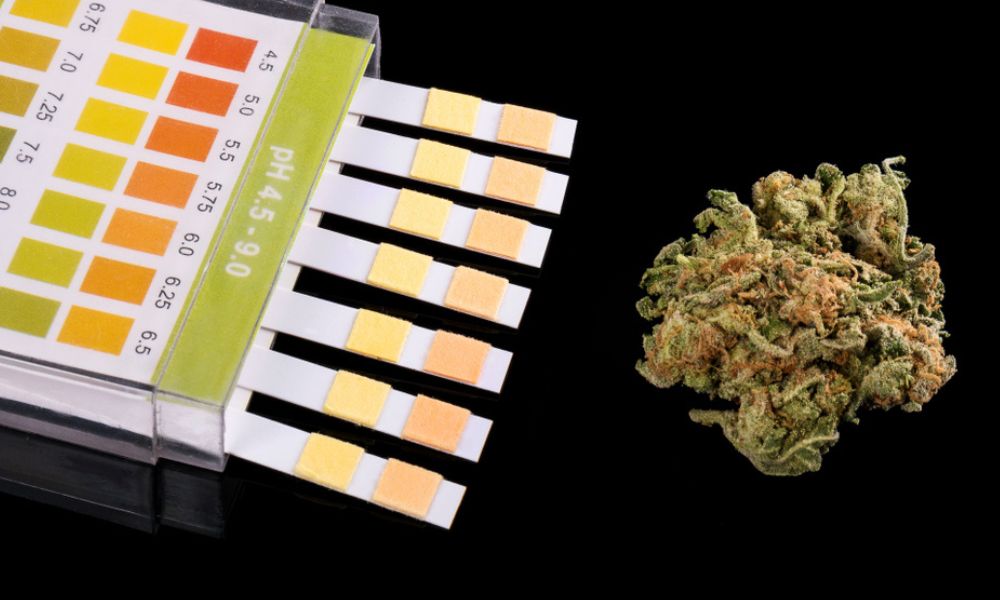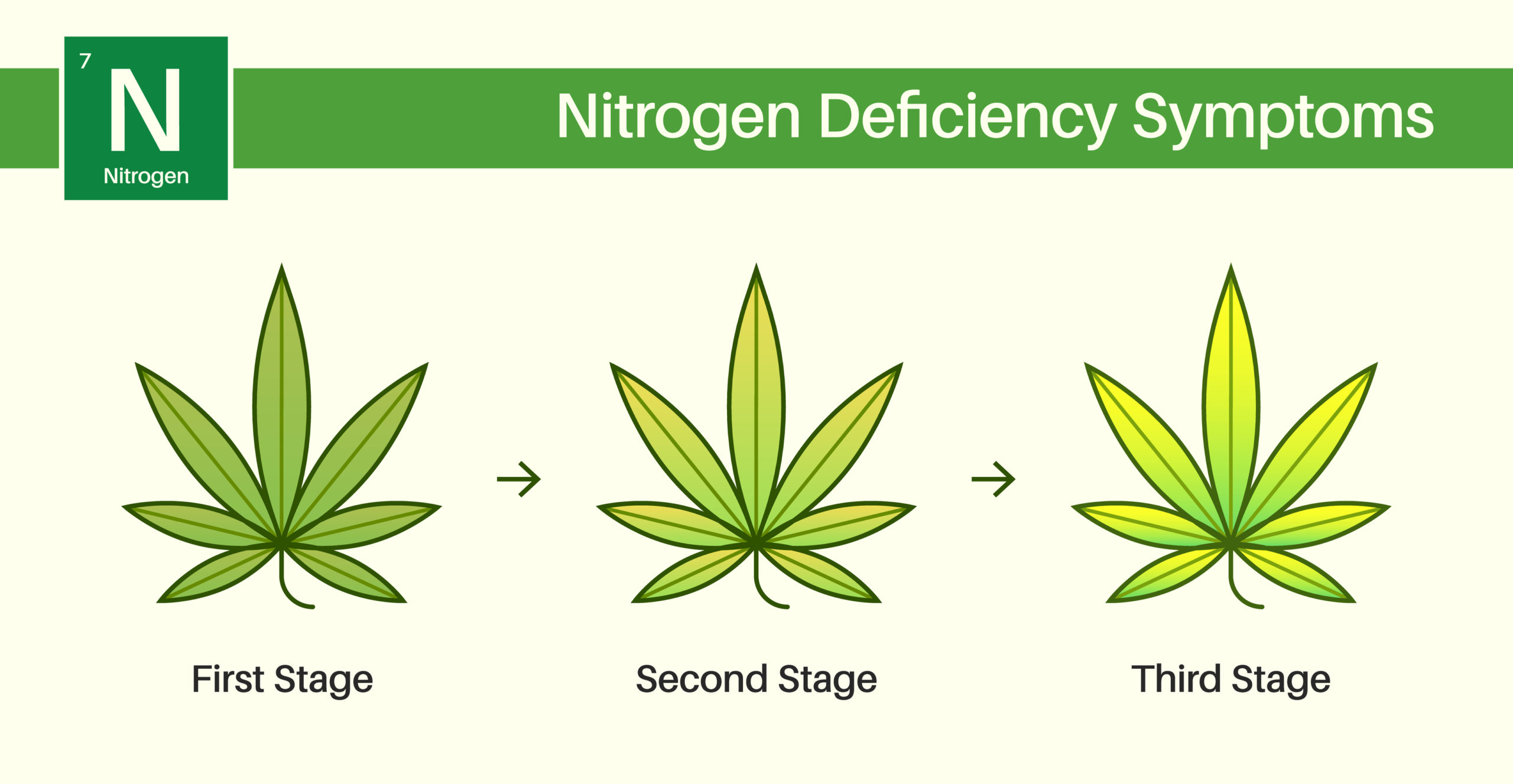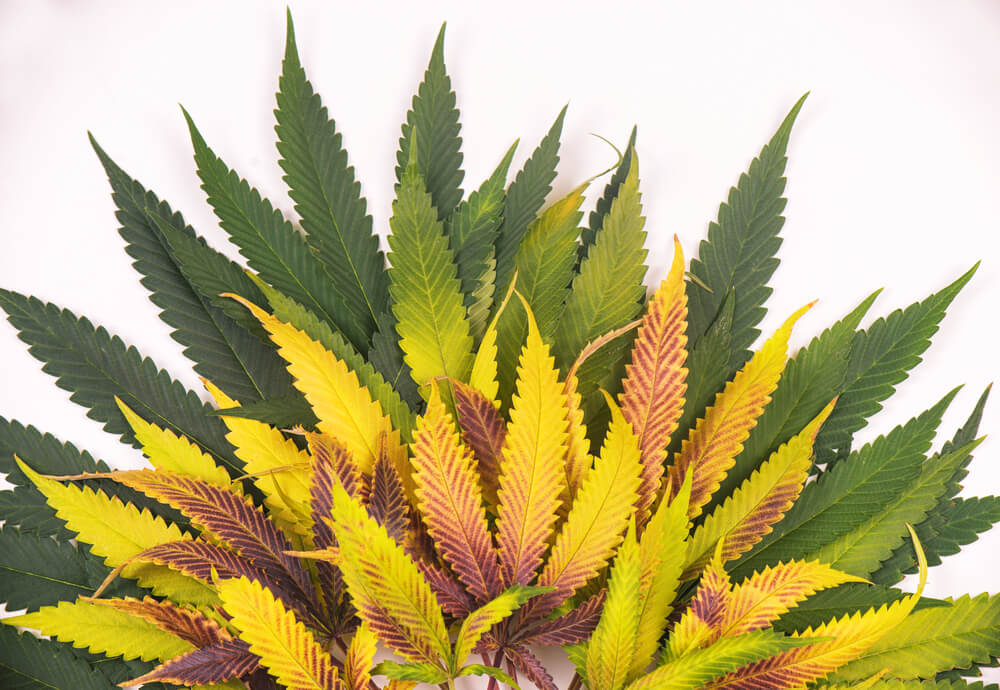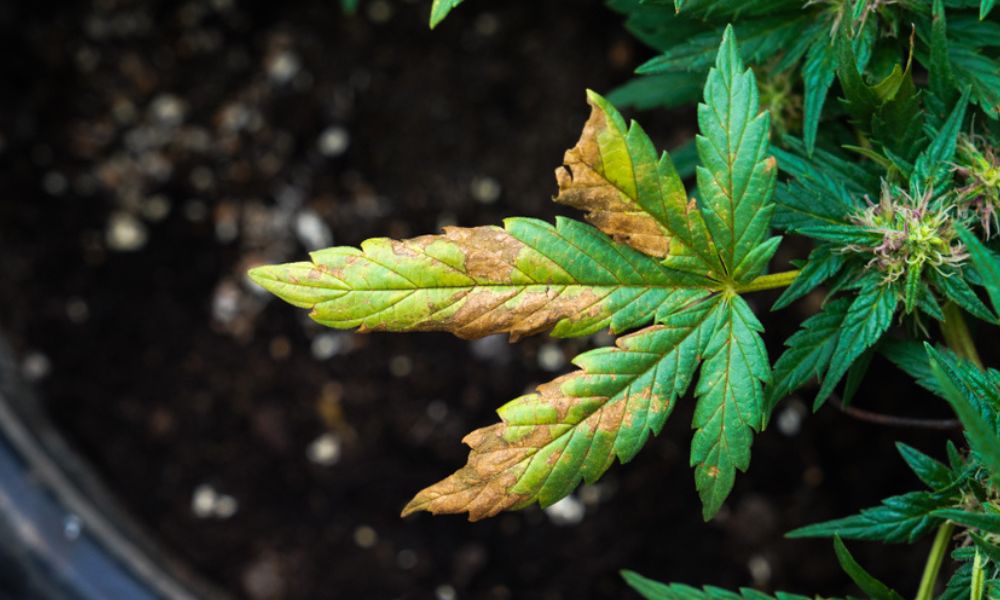No professional pot photographer will ever post photos of bright yellow fan leaves on Instagram. Even non-cultivators know that yellow cannabis plants aren’t healthy. Green is the “golden” color for ganja, yet many home-growers complain of yellow leaves during cultivation. What gives?
The Most Common Explanations For Yellow Cannabis Leaves
Unfortunately, there’s no simple solution for diagnosing yellow fan leaves. Although this condition is common in cannabis plants, there’s no single cause for yellowing leaves. Figuring out why your cannabis strain is yellow will probably take some investigative work. However, knowing the most common explanations for yellowing leaves can help you quickly address the underlying issue.
First Off, Take A Peek At Your pH!

Many new cultivators assume yellow cannabis leaves are always related to nutrients. While nutrient deficiencies could trigger yellow leaves, these issues are often caused by improper pH levels.
Remember that a marijuana plant’s roots can only absorb nutrients in a specific pH range. Every nutrient is bioavailable at a different pH level.
New cannabis growers usually aren’t as concerned with pH levels as with feeding their plants supplemental nutrients. However, all the nutrients in the world won’t do a cannabis plant any good if the pH isn’t at the right level. Addressing a nutrient deficiency without proper pH will only create more problems in your growing medium.
No matter where you spot yellowing leaves on your cannabis, you should always check the pH level. Soil pH should be around 6 – 6.5, while hydroponics units must be at 5.5 – 6.5.
This may seem too obvious, but you’d be amazed how often a wrong pH level causes problems like yellow leaves.
Watch Out For A Naughty Nitrogen Deficiency

Of the many nutrient deficiencies that could cause yellow leaves, nitrogen is the most common. Thankfully, it’s also relatively easy to diagnose a nitrogen deficiency.
Since vegetative plants need a ton of nitrogen, it’s most common to see nitrogen issues during this stage of development. However, some people have also mentioned seeing a nitrogen issue when transitioning from high-nitrogen supplements to flowering nutrients.
Whenever you see a nitrogen deficiency, you’ll first notice yellow on older leaves at the bottom of the plant. Nitrogen is considered a “mobile” nutrient, which means it will work its way from the base of your plant to the top. As a nitrogen deficiency progresses, the leaves that turn yellow will steadily wilt and fall off. If you need to use force to pull off a yellow fan leaf, it’s probably not a nitrogen issue.
Stunted growth is another tell-tale sign that plants have a nitrogen deficiency. Vegetative plants need nitrogen to grow, so it makes sense they wouldn’t grow as tall or produce as many new leaves if they don’t have enough “food” via nitrogen.
If you suspect your plant has a nitrogen deficiency, double-check the pH range and adjust if necessary. You could also ramp up your vegetative nutrient feeding schedule. By tweaking these two variables, you should notice the symptoms of a nitrogen deficiency significantly reduce after a few days.
Yellowing Leaves On The Top? Consider Repositioning Your Light

“Light burn” is another common reason some cultivators notice yellow cannabis leaves. In this case, you’ll probably see the yellow leaves near your plant’s top. It’s also common for these fan leaves to curl upwards at the ends and form brown edges.
As the name suggests, “light burn” is caused by excessive exposure to lightwaves. Most often, cultivators who notice this issue have their grow light too close to their plants or on an intensity that’s way too high.
To correct “light burn,” you must change your grow light’s position or intensity. Some grow lights have dimmer controls that help you adjust the PPFD without physically moving your grow light up. However, if your grow light doesn’t have a dimmer, you’ll need to move it up a few inches to protect your buds.
If you don’t have extra room to raise your lights, you will need to learn low-stress training (LST). Basically, LST involves bending your plants with string to increase light penetration. This training technique has the secondary benefit of lowering your plant’s height, so it’s less likely “bud burn” will be an issue.
To learn more about getting started with techniques like bending, be sure to check out his previous guide to “Cannabis Bonsai.”
Could Other Nutrient Deficiencies Cause Yellow Cannabis Leaves?

While a lack of nitrogen often causes yellow leaves, other deficiencies could trigger this issue. However, whenever a secondary nutrient is involved (i.e., not nitrogen, potassium, or phosphorus), these “nutrient deficiencies” are probably pH imbalances.
Cannabis doesn’t need high traces of nutrients like manganese, magnesium, or iron, especially if you’re growing in soil. So, even though one of these nutrients may be “deficient,” the best course of action is to adjust your pH.
That being said, you may notice slight yellowing on the edges of your leaves with a phosphorus deficiency. Like a nitrogen deficiency, phosphorus issues begin at the bottom of the plant and move upward.
However, phosphorus deficiencies typically happen during the flowering stage, and affected leaves will first turn a darkish-purple before revealing yellowish tips. A phosphorous deficiency will also result in rust-brown splotches on your leaves and possibly a purple stem.
Magnesium is another mobile nutrient that could cause yellow leaves. What separates magnesium deficiencies from other issues is that the yellowing is “interveinal.” In other words, you’ll notice thin streaks of yellow on your fan leaves in-between the veins.
Three immobile nutrients that may cause cannabis yellowing are as follows:
- Manganese: A manganese deficiency usually starts on newer leaves and appears as yellow patches with brown spots.
- Iron: Bright yellow spots emerge on newer fan leaves close to the branch rather than on the tips. These leaves will turn white if left untreated.
- Sulfur: A sulfur deficiency looks similar to nitrogen deficiency, but it can start in patches all over the plant rather than at the bottom.
Remember: Most of these rare nutrient deficiencies are due to improper pH. Cannabis plants usually get enough of minor nutrients like manganese, iron, and sulfur if you have high-quality soil. The issue is that cannabis can’t absorb these compounds because the pH isn’t at the right level.
It’s more common to see one of these deficiencies if you’re using a hydroponics unit. Since water doesn’t have as many natural nutrients as soil, it’s more likely that hydroponics growers will run into rarer nutrient issues than soil growers.
Is It Normal To See Yellow Leaves At Harvest?
It’s never pretty to see yellow leaves on a cannabis plant, but please don’t freak out if they start appearing near harvest. As your cannabis plant approaches its grand finale, it will send all its nutrients to the all-important bud sites. During this time, it’s common to see some fan leaves turn yellow and fall off.
There’s usually no need to fret if you notice yellowing leaves near your plant’s average harvest time.
Ganja Should Always Grow Green! — Be On The Lookout For Yellow Leaves
There are dozens of reasons your cannabis plant could have yellow leaves, but the most common culprits are improper pH, nitrogen deficiency, and too much light. If you know how to check for these three issues, then you should know how to diagnose and treat yellow leaves.
While yellow leaves aren’t always a sign of trouble, they often signal something is wrong during vegetation or early flowering. Please keep careful tabs on your nutrient feeding schedule and daily pH levels to prevent dealing with more severe issues.

Leave a Reply